One of the best things to do when living or studying abroad, is to visit museums and historical institutes to try and learn about that particular place. For me, visiting museums is a no-brainer since I work in museums. I enjoy them. I find it fascinating to see how each museum operates, how they present their material, artifacts, and overall message, but I also genuinely enjoy learning something new.
While in Warsaw, I visited many museums. Some I thought were incredible; others were simply “okay.” But after leaving each and every museum, I went home and read more about something I had seen or learned while touring the exhibits.
Here is a list of museums in Warsaw, Poland that I visited – some more than once – with one pro and one con to each museum. Oh, and another positive to visiting museums in Warsaw? They all offer a “free day” once a week!
POLIN Museum: A Thousand Year History of Polish Jews
I personally may be partial to this museum since I am working here for the summer, however, the POLIN Museum was voted Best European Museum of 2016, so that lets you know that this museum is doing something right!
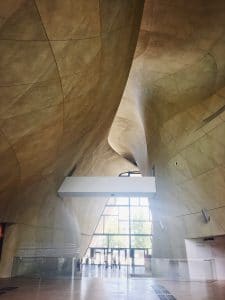
Three words to describe POLIN: innovative, interactive, and interesting. Although the entire museum is about the history of Polish Jews, the museum tackles the issue of xenophobia, nationalistic prejudice, racism, and stereotypes. POLIN is preserving the Jewish history and culture, and the museum contributes to the mutual respect between Poles and Jews. For the WWII/Holocaust history buffs, the twentieth-century galleries, On the Jewish Street, Holocaust, and Postwar Years, are top notch.
Pro: It is hard to pick one pro, but for me, the core exhibition is one of the best I have ever seen. From the Middle Ages to contemporary times, you will learn so much during your visit at POLIN Museum.
Con: This is a very popular museum, so depending on the time and day you visit, you may be overwhelmed with the amount of visitors and groups and school groups from all over the world.
Read a full description of the POLIN Museum on this site.
Warsaw Uprising Museum
Opened on the 60th anniversary of the Warsaw Uprising, the Warsaw Uprising Museum is dedicated to the brave men and women who so valiantly fought and died for their city.
The museum presents the story of the Uprising, and includes many personal artifacts such as weapons, uniforms, maps, and even love letters. The museum, although presenting the history of the event, also makes the entire experience of touring the museum very personal. It includes many recorded interviews with survivors of their memories and stories remembered from being a part of the Polish underground army.
Pro: This is a museum dedicated to the Polish underground army and to the men and women who so bravely took a stand against the Nazis. The history and story is fascinating, and the museum makes you want to leave and immediately read a book on the subject. (Side note: I highly recommend Dr. Alexandra Richie’s Warsaw 1944: Hitler, Himmler, and the Warsaw Uprising.)
Con: The museum, to me, presents the Warsaw Uprising as being a successful attempt to stop the Nazis, and the truth is, not only were they incredibly not successful in stopping the German army, but by resisting and taking a stand, Hitler ordered more bombings of Warsaw, resulting in Warsaw becoming almost completely flattened.
Read a full article on The Warsaw Uprising: Museums, Monuments, and Cultural Memory in Warsaw Today

Jewish Historical Institute
The building in 1928 was originally the Institute for Judaic Studies; it was also the Main Judaic Library. During the WWII, it was located in the Warsaw Ghetto, and the building along with the synagogue attached to it, was set on fire by the Germans. Traces of the fire are still visible today.
Today, the Jewish Historical Institute‘s purpose is to preserve, recreate, and promote the Polish Jews and their memory. They have a collection of sculptures, paintings, and artwork created by Polish Jews during the interwar period, sculptures from the 1920’s and 30’s, and a large part of their historical memorabilia comes from during Nazi occupation during the Second World War from various ghettos and extermination camps.
The Underground Archive of the Warsaw Ghetto at the Jewish Historical Institute is a unique collection of things saved thanks to Emanuel Ringelblum and his actions while in the Warsaw Ghetto. Ringelblum was a historian, and he started a group in the Warsaw Ghetto that was dedicated to collecting and documenting testimonies of those held prisoner inside the ghetto walls.
Pro: The Jewish Historical Institute has some of the most amazing artifacts that were hidden and saved in the Warsaw Ghetto. So much of Warsaw was destroyed during WWII that it is fascinating to see diaries, letters, drawings, and more that were discovered under the rubble after the war.
Con: Many people overlook the Jewish Historical Institute unless they are Jewish or have Jewish heritage. Also, the location and entrance of the museum is not easily visible, making it a little difficult to find.

Mausoleum of Struggle and Martyrdom
Located at Szucha street Nr. 25, the former German Gestapo headquarters is now known as the Mausoleum of Struggle and Martyrdom a part of the Museum of Independence. The building was once a religious center, but during German occupation, the building became the Gestapo headquarters for five years. Here, Polish men and women were brought in for interrogation and questioning; many prisoners did not survive.
There are hundreds of testimonies of what occurred on the interrogation floor. There are still a few, very tiny cells, and on the walls you can see where prisoners marked the date or scribbled out prayers. One cell was called the “tram” room; this room has tram like seats, and prisoners would be forced to sit in the chair for days, not allowed to move, sleep, speak, or even look at the prisoner next them. During interrogations, prisoners were beaten, whipped, electrocuted, or even bitten and attacked by dogs. If the prisoners did not give the Nazis the answers they were wanting to hear, the Nazis would often torture or murder the prisoner’s family in front of them. From the windows, some of the bored Nazi officers would practice target shooting by killing Jews, identified by their blue and white armband, as they walked by the building.
In the cellar is where the executions often happened, or after a terrible beating, prisoners would often die. Other prisoners were starved to death. But after the war, over 5,000 kilograms of human ashes were discovered.
Today, there is still the interrogation room with the officer’s desk, a Nazi coat, a bookshelf with various torture devices, and a faded framed picture of Adolf Hitler. The screams and moans of prisoners were muffled by music; the same radio that used to play at its full volume is still in the hallway
Pro: There are no words to describe the feeling of standing in the very place the German gestapo once tormented and killed Polish prisoners. The entire experience is quite frightening, and as you walk through the museum, recorded sounds of screams, beatings, and cries of pain are played throughout the exhibit. The cells with the marked walls of words of dying prisoners will send chills down your body, and you will leave the museum wanting to learn more about what occurred at the location.
Con: The museum is very small; it is so small, in fact, that you won’t know about it unless you are researching or googling it. From the entrance, there is no obvious sign of the museum. Also, you are only allowed access to one floor; the cellar where the killings took place is not opened to the public.

Pawiak Prison
Founded in 1965 by former prisoners of the Pawiak Prison, the museum building is built with the remnants of former buildings’ materials and located in the only remaining underground prison cell. Although the Germans destroyed the prison by explosives in 1944, during construction of the museum, artifacts including documents, equipment, prisoners’ items, and more were discovered and are now in display in the Pawiak Prison.
The Pawiak Prison was built in 1830 by the Russians and was a prison for political prisoners and criminals alike. In the mid-nineteenth century, the prison was used as a transfer camp to Siberia for Poles that took part in the January 1863 Uprising against the reign of Russia.
But following the 1939 invasion of the German army, the Pawiak Prison became the Gestapo’s prison and a part of the Nazi concentration-death camps. After interrogation at the Gestapo headquarters, if still alive, men and women prisoners were sent the Pawiak Prison. Around 300,000 Polish men and women were sent to the prison, and of those, 40,000 were executed at the prison and 60,000 were transported to either Treblinka, Auschwitz-Birkenau, Ravensbruck, or Gross-Rosen. The exact numbers are not known due to the fact that the prison’s archives were destroyed.
A small but powerful museum, the remaining one building tells the history of the Pawiak Prison and the hell that was endured in the prison during German occupation.

Pro: In front of the museum entrance is the bronzed Monument Tree of Pawiak, a monument built in the place of the former elm tree that stood in its location. The elm tree survived the bombing of the prison, but in 1984, the elm tree died afflicted with Graphiosis disease. For twenty years, experts kept the tree standing with concrete support, but in 2004, it was replaced with a bronze copy. The monument was placed in the exact location of the elm tree, and it is covered with metal obituaries of names of the men and women prisoners that were executed at the Pawiak Prison.
Con: Although the Monument Tree of Pawiak brings attention to those walking past the Pawiak Prison, the museum itself does not get a lot of attention or marketing in Warsaw. Like its partner, the Mausoleum of Struggle and Martyrdom, you may not be aware of the Pawiak Prison without being informed about it prior to visiting Warsaw.
Katyn Museum

The Katyn Museum is located in the former nineteenth-century fortress and prison, Warsaw Citadel. The museum’s purpose is to remember the Polish prisoners that were so brutally executed by Stalin’s orders. For almost half a century, the Russians denied their involvement in the shootings of Polish political figures and military leaders, blaming the entire massacre on the Nazis. However, in the early 1990’s, Russia admitted the NKVD was responsible for the arrest and execution of twenty thousand men.
Pro: A mighty message of a not talked enough subject. Most Americans are not taught about the Katyn Massacre, so visiting a museum about the Katyn Massacre is a must if you are visiting Warsaw. Also, it is completely free to tour the museum.
Con: Everything is in Polish, and although they do have English audio guides, the audio guides are not the best. They skip from room to room and sometimes just cut off, and the few interactive exhibits aren’t available to visitors unless you speak or understand Polish.
Copernicus Science Center

Opened in 2010, the Copernicus Science Center is a massive learning and experimental museum for all ages. The museum is full of exhibits, workshops, labs, a planetarium, rooftop garden, and other special projects. Science and curiosity is a state of mind, and the Copernicus Science Center awakens the passion for learning all things science.
Pro: The planetarium is incredible, and the view from the rooftop garden is worth seeing.
Con: Although the museum is for all ages and minds, the Copernicus Science Center is an extremely popular museum for children and school groups. Don’t be shocked to see hundreds of kids visiting the museum the same day as you!
Read about a Visit to the Copernicus Science Center, Warsaw on this site.
Marie Curie Museum

Before coming to Warsaw, I had no idea that Marie Curie was Polish, so I was quite surprised to learn that the famous chemist and physicist was born and raised in Warsaw. And in the Old Town of Warsaw, in the home where she was born, there is the Marie Curie Museum.
Marie Curie is famous for her pioneer research in radioactivity; she discovered two elements: polonium, named after her native country, and radium. She was the first woman to win a Nobel Prize, and the first person and only woman to win twice. She is also the only person to win a Nobel Prize in two different sciences. Marie Curie was the first woman to become a professor at the University of Paris, and she was a hero on the battlefields of WWI, creating radiological medical centers to treat wounded soldiers.
Pro: Marie Curie is a total kick-butt woman, and everybody should know about her life, her work, and her contribution to the world. Plus, the museum is in the home where she was born which is an added cool factor.
Con: Unless you are really interested in chemistry or science or have always enjoyed learning about Marie Curie, you probably will put this museum at the bottom of your list to visit.
Zacheta – National Gallery of Art

The history of Zacheta began under Russian rule during the 1860’s; the idea was to have a gallery specifically collecting and presenting Polish artwork. It wasn’t until after Polish independence in 1918 that the gallery had its own building. Sadly, during WWII, most of the artwork was transferred to safekeeping at the National Museum, and the Zacheta building became Haus der Deutschen Kultur (House of German Culture) and was used for Nazi propaganda events. During the Warsaw Uprising, it was damaged, and the Germans tried to set the building on fire.
After the collapse of communism in 1989, Zacheta continued being a place of contemporary art created by young Polish artists. In 2003, it became Zacheta- National Gallery of Art.
Today, Zacheta presents both Polish and foreign contemporary artwork from the twentieth and twenty-first centuries. There are no permanent art galleries, but instead, Zacheta is constantly revolving temporary exhibits for tourists and visitors to enjoy.
Pro: The Zacheta building is beautiful. The entry stairway is breathtaking, and the ballroom makes you wish that you were attending a grand masquerade, spinning in the arms of a partner, living out the night. The grand building is worth a visit.
Con: The exhibits are constantly changing, so you never know what you are going to get. It is definitely a risk visiting the museum since you do not know exactly what you will see. But they do update their website with information, and for students, the ticket cost is only one Zloty – which is practically less than a cent USD, so the risk is worth it!
National Museum in Warsaw

The National Museum in Warsaw was founded in 1862 and was originally a museum of fine arts. It is one of the oldest art museums in the country. Today, the National Museum in Warsaw has over 830,000 works of art from Poland and abroad. The collection includes pieces from ancient times to the present, paintings, sculptures, clothing, coins, and more.
Pro: A large building with thousands of artifacts ranging from silver to antique pieces to artwork to tapestries to clothing. You are bound to find at least one thing in each gallery that will love and admire. The collection of clothing worn by Polish nobility is gorgeous!
Con: The National Museum in Warsaw is heavily filled with religious pieces, and one of the main galleries is alter pieces and sculptures from various churches of Poland. I personally felt that the museum was more of a religious museum than an art gallery.
The Museum of Warsaw

The Museum of Warsaw consists of three buildings in the marketplace of Old Town. It was established in 1936, and like the rest of Old Town Warsaw, it was completely destroyed during WWII.
Since 2010 there have been incredibly amounts o f renovations and rebuilding of the museum. There are over 250,000 artifacts ranging from fields of interests from archaeology to art to postcards to graphics and more.
Pro: The Museum of Warsaw is located in Old Town, and at the very top of the museum is a viewing floor. This floor lets you overlook Old Town, and it really is worth the visit to see the views and look over the marketplace. Also, they have a really cool room with mini models of the monuments located throughout Warsaw.
Con: The museum is a bit of a maze filled with exhibit rooms that have nothing in them. I wasn’t aware of renovations, and I found myself often confused on why I kept entering empty rooms, wondering if I was in an abandoned part of the museum.
The Heritage Interpretation Center
A branch of the Museum of Warsaw, the Heritage Interpretation Center is also located in Old Town. It is a new establishment, and it is a museum dedicated to Old Town Warsaw, a UNESCO World Heritage site. The museum is about the turbulent fate of Old Town during WWII and how the Polish citizens of Warsaw rebuilt the Old Town following the devastation of the war.
Pro: Small enough to not have to spend more than a hour touring the facility, and it really is neat to see the photographs of Old Town from before, during, and after the war. The courage and determination it must have taken to rebuild the city following WWII makes the Heritage Interpretation Center worth visiting to show respect.
Con: The museum is mainly photographs; many of these photographs you can google and see online.

Neon Museum
The Neon Museum is dedicated to preserving the Cold War era neon signs and lights. The museum is restoring the last surviving remnants of the “great neonisation” campaign that was popular across Eastern Europe.
A rare and special museum, the Neon Museum hosts various signs, some that were on hotels, others that advertised local theaters as well as restaurant and café signs. The bright and buzzing lights make the visit a unique experience.
Pro: The Neon Museum is a specialty museum, and it is really cool to see the symbol of Warsaw, the mermaid, in neon lights.
Con: The Neon Museum is located in the Praga District in the middle of the Soho Factory. It isn’t easy to get there by public transportation, and the entire museum takes about twenty minutes to see the signs.
Read about A Visit to the Neon Museum, Warsaw on this site.
Chopin Museum

The mission of the Fryderyk Chopin Museum is to cultivate the memory of the great composer and pianist, Fryderyk Chopin. The museum is about the life and work of Chopin, and while touring the museum, you will hear the beautiful sounds of Chopin’s symphonies playing throughout the museum as you read about his life, his education, see original sheet music, and even two of his pianos.
Pro: The Chopin Museum is in a phenomenally stunning building, and even if you aren’t a fan of his work, the architecture with the white marble floors and staircases with gold accents, are totally worth seeing.
Con: The Chopin Museum attracts only those interested in the composer or classical music. Even many Polish citizens have not visited the museum dedicated to the great musician from Warsaw.
Read about visiting the Chopin Museum on this site.
Royal Castle
The Royal Castle of Warsaw, located in the Old Town, was built during the fourteenth century, but during the sixteenth and seventeenth century, King Sigismund III expanded the Royal Castle, creating a beautiful and majestic palace.

It was destroyed during the Swedish Wars in the late seventeenth century, rebuilt during the reign of the Saxon-Wettin dynasty, losing a lot of their artwork and sculptures during the late nineteenth century while under Russian rule, and regained control of the palace after the Polish Independence in 1918. Sadly, it was bombed in 1939, and then completely blown up and destroyed in 1944 by the Germans.
Communists authorities decided to rebuild the Royal Castle, and the construction began in 1980. In 1984 the interior was reconstructed as it once had been, and the Royal Castle opened to the general public. Since 1995, reconstruction to completely restore the Royal Castle, its gardens, and surrounding buildings has been going on, and once finished, the Royal Castle will be the once again beautiful and majestic palace.
Pro: The Royal Castle is beautiful! Each room of the castle is breathtakingly pretty. Going from room to room, I was constantly captivated by the colors, the artwork, the chandeliers, and more.
Con: To really learn the history of the Royal Castle, you need to do a guided tour. Audio guides are available for a fee, but even then you aren’t given the full grand tour with the history of the palace. Also, once you see one Royal Castle, you’ve sort of seen them all.
Museums Outside of Warsaw
Additional WWII and Holocaust museums worth traveling out of Warsaw to visit and tour:
Treblinka Concentration Camp and Museum of Struggle and Martyrdom, near the town of Malkinia Gorna and in the province Mazowieckie.
Museum of the Second World War, Gdansk, Poland.
Oskar Schinder’s Factory: Historical Museum of Krakow, Krakow, Poland.
Auschwitz-Birkenau Museum, Oświęcim, Poland.
Radegast Train Station Museum, Lodz, Poland.
You’ll Also Love
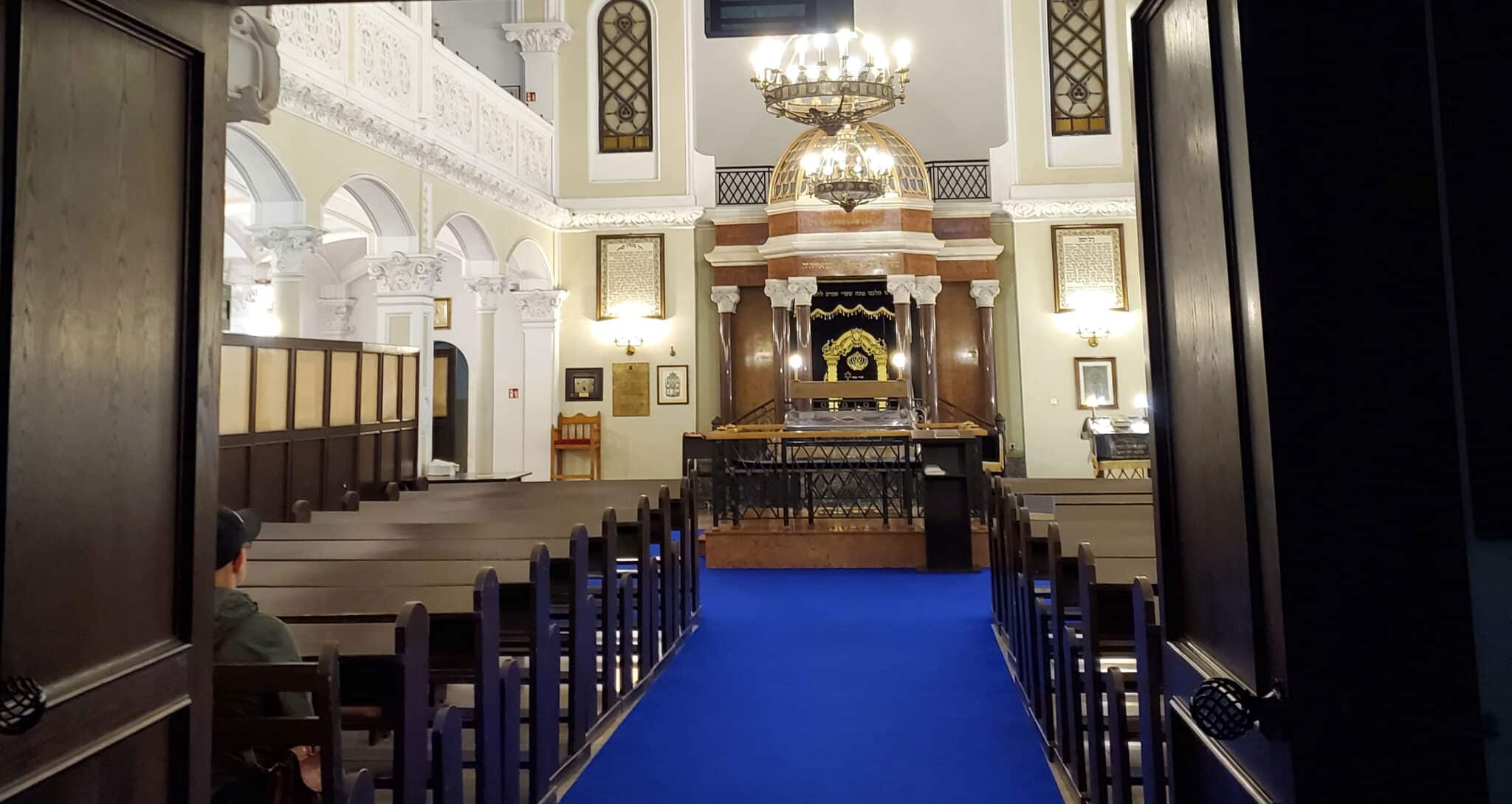
Nożyk Synagogue in Warsaw
Tucked away on a side street in central Warsaw, the heart of the city’s old Jewish center still beats within the walls of the Nożyk Synagogue. The Nożyk Synagogue was the only synagogue in Warsaw to survive the devastation of WWII. Today, it serves as the primary place of worship for the Jewish community in […]
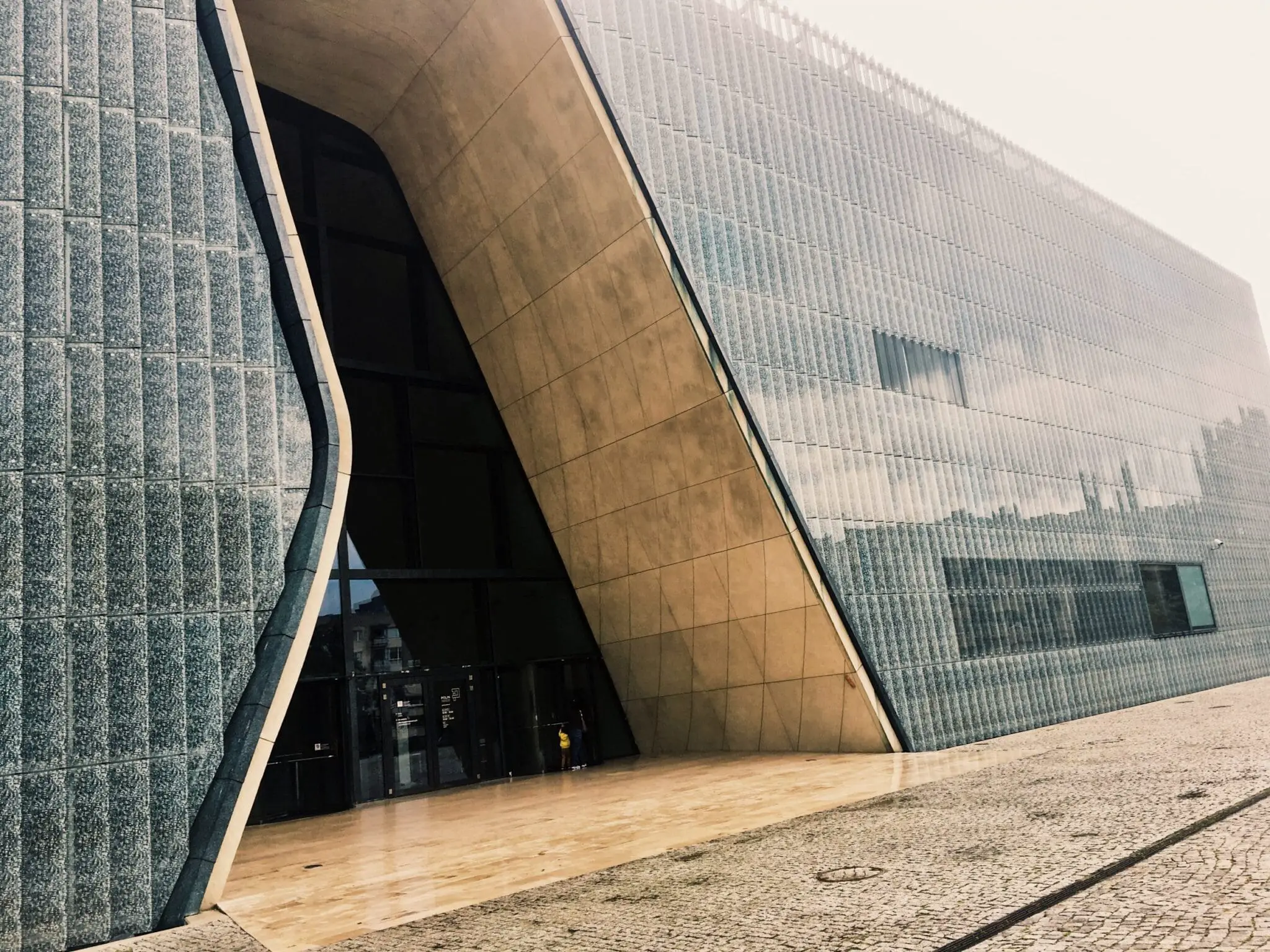
The POLIN Museum of the History of Polish Jews
The POLIN Museum of the History of Polish Jews, located in Warsaw, Poland, is a renowned cultural institution dedicated to preserving and presenting the 1,000-year history of Jewish presence in Poland and to promote tolerance, understanding, and mutual respect. It serves as a space for learning, reflection, and dialogue, exploring the rich cultural and religious […]
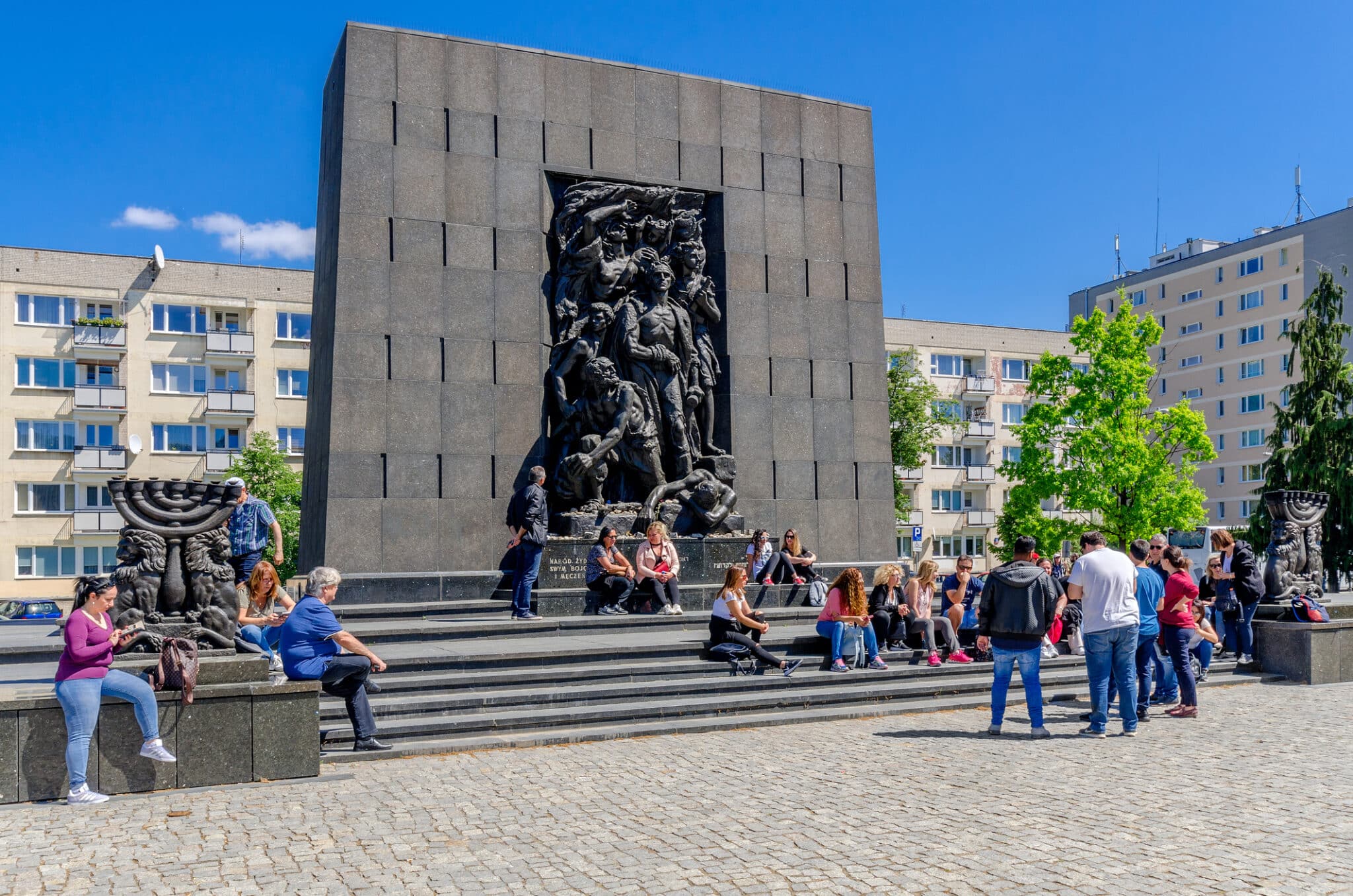
Memorial Route of Jewish Martyrdom and Struggle in Warsaw
All around Warsaw, there are reminders of the historic Jewish presence. Though Warsaw has experienced incredible change and development since WWII, the city has taken special care to ensure that the plight of the Warszavian Jewish community will never be forgotten. In the location of the former Warsaw ghetto are several memorials that educate passerbys […]
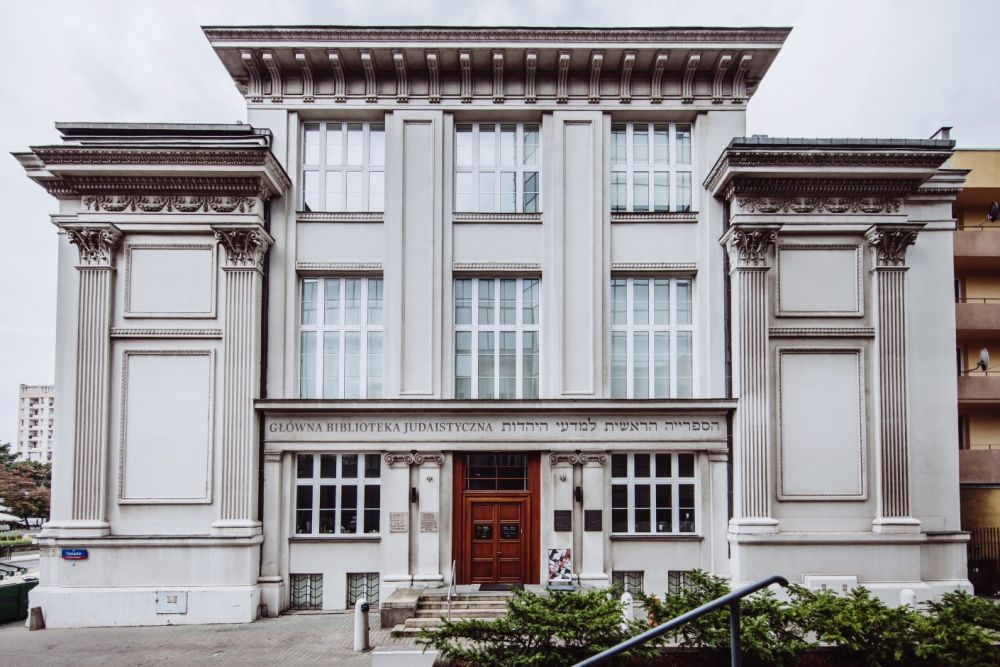
Jewish Historical Institute in Warsaw: “What We’ve Been Unable To Shout To The World”
The Jewish Historical Institute’s mission is to promote awareness of the thousand-year Jewish presence in Poland. They achieve this through exhibitions, artistic events, conferences, education programs, and publishing. The Institute serves as a repository of Jewish heritage, preserving collections like the Underground Archive of the Warsaw Ghetto. They also maintain Jewish cultural monuments, are developing […]
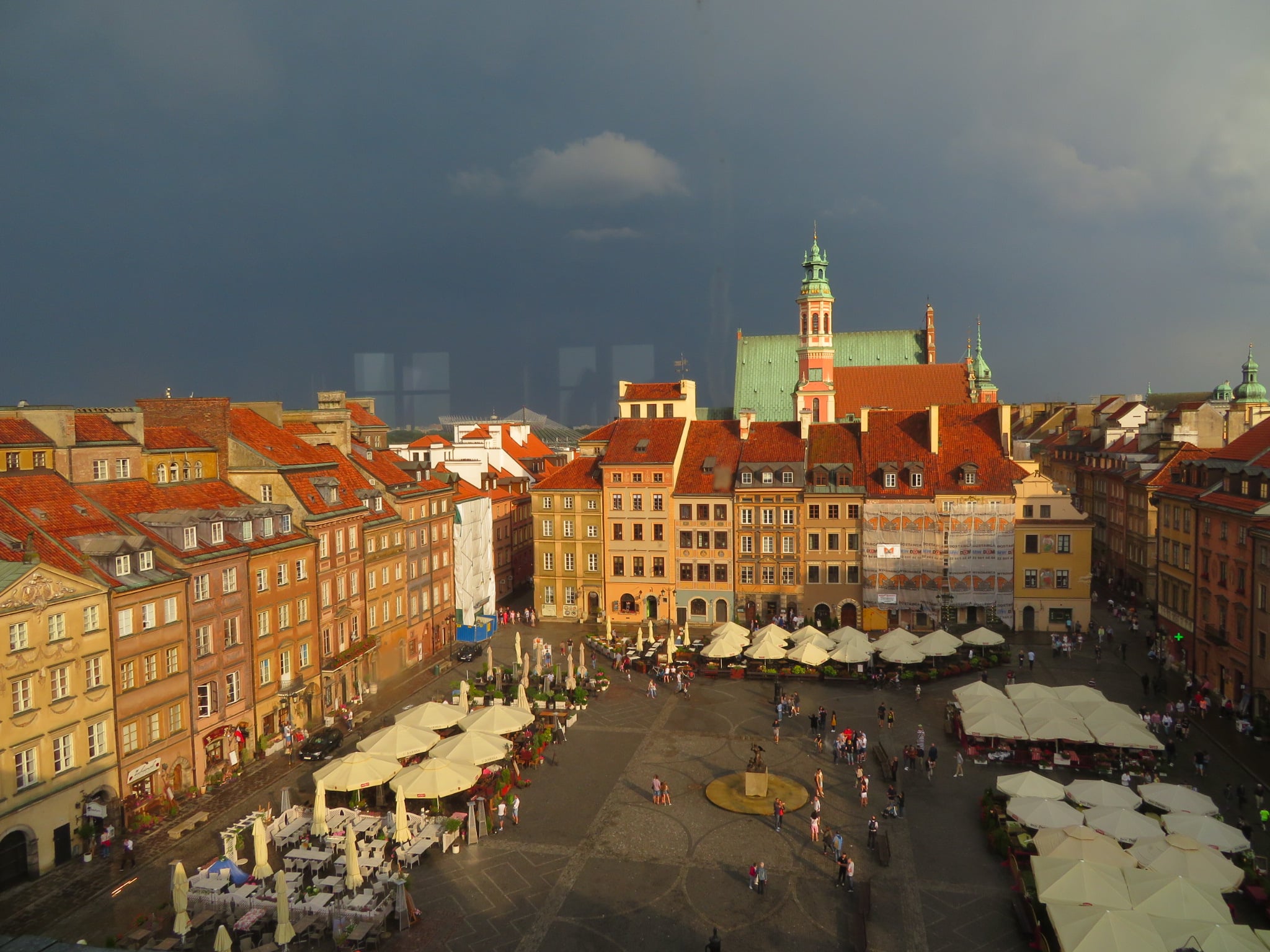
Warsaw’s Best Museums: History, Struggle, Tragedy, and Freedom
One of the best things to do when living or studying abroad, is to visit museums and historical institutes to try and learn about that particular place. For me, visiting museums is a no-brainer since I work in museums. I enjoy them. I find it fascinating to see how each museum operates, how they present […]
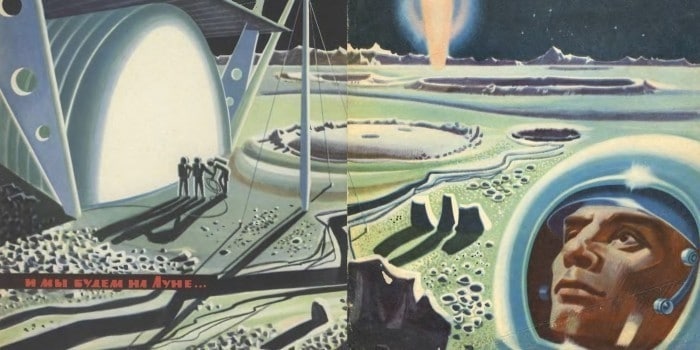
Science Fiction and Fantasy From Behind the Iron Curtain
Science fiction/fantasy, often shorthanded to SFF, is a genre of media concerned with supernatural, fantastical, or other elements beyond our current technological capabilities. Although its roots run deep, borrowing inspiration and elements present in The Odyssey or 20,000 Leagues Under the Sea, SFF truly came into its own after the Industrial Revolution. It was a […]
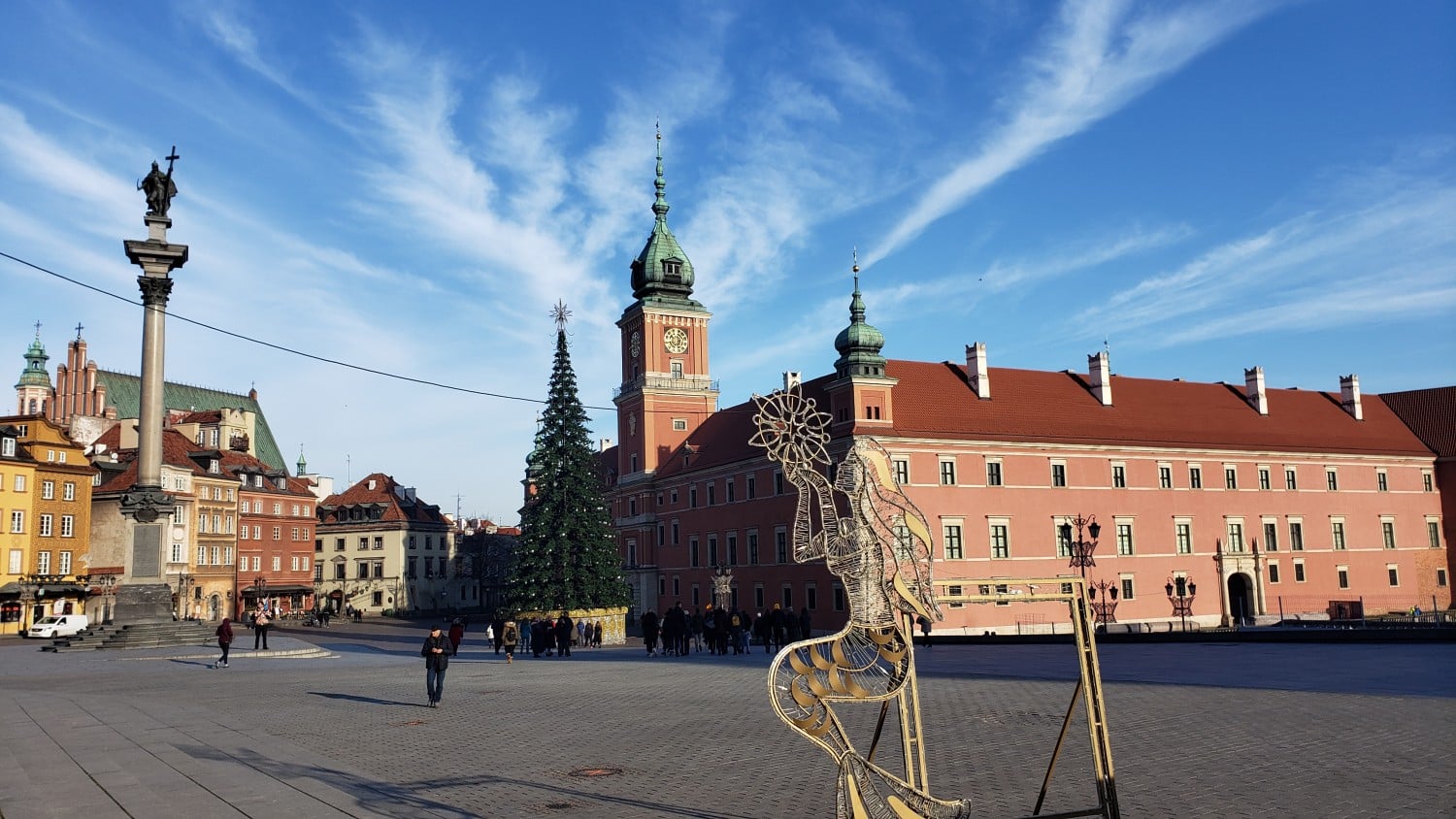
Warsaw’s Old Town District
While I was on study abroad in Warsaw, Poland, the place I visited most behind the Palace of Culture and Science, where I had classes every day, was Old Town. Why? Simply put, a trip to Old Town in Warsaw is like taking a journey back in time. It is the gem of the city […]
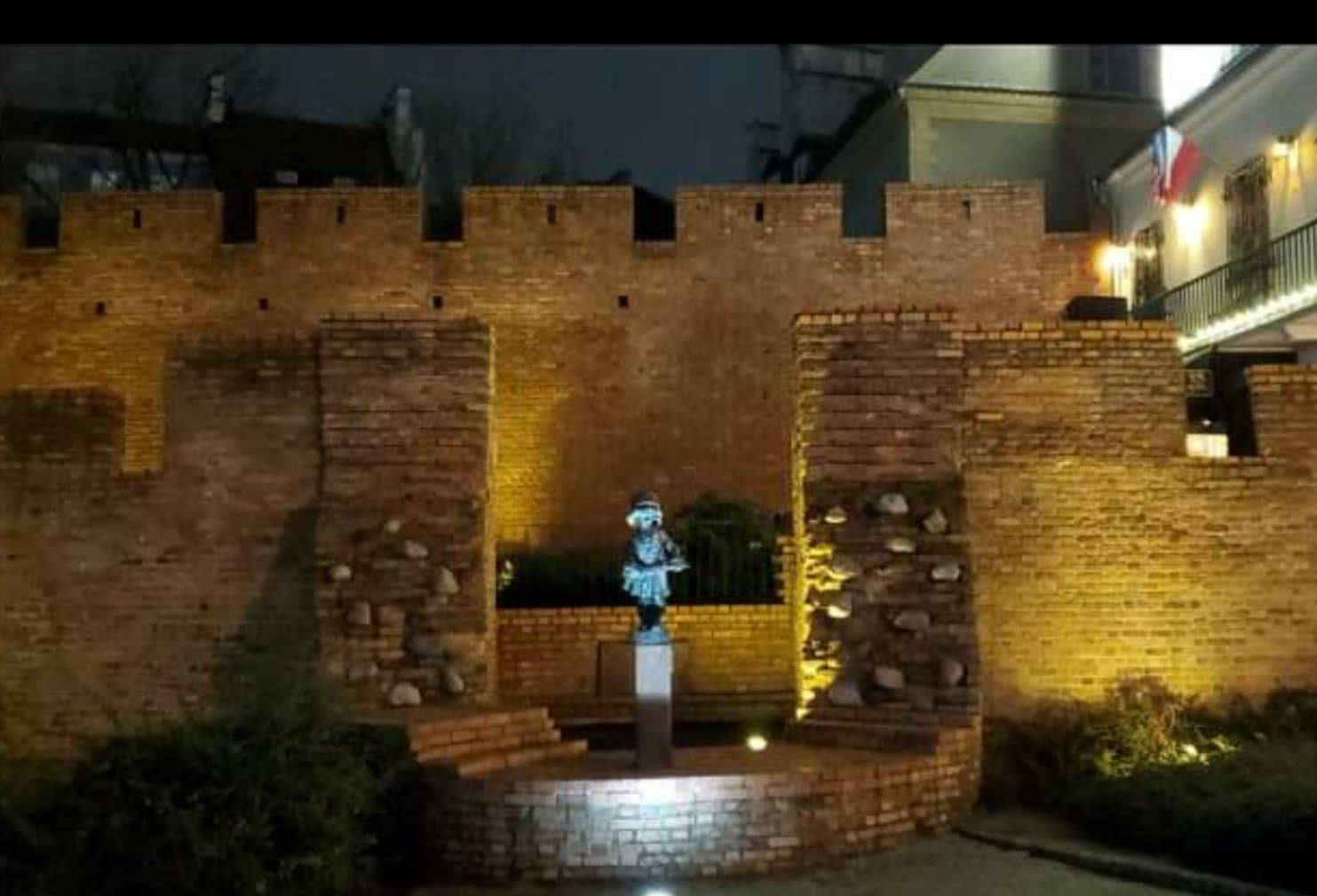
The Warsaw Uprising: Museums, Monuments, and Cultural Memory in Warsaw Today
Many of our students are profoundly moved by how vividly the Warsaw Uprising is remembered in Poland. Those who fought are revered with the respect of founding fathers. Thier symbols and history are preserved and highlighted across the city in museums, monuments, and graffitti. The narrative is popular in modern film (such as the recent […]
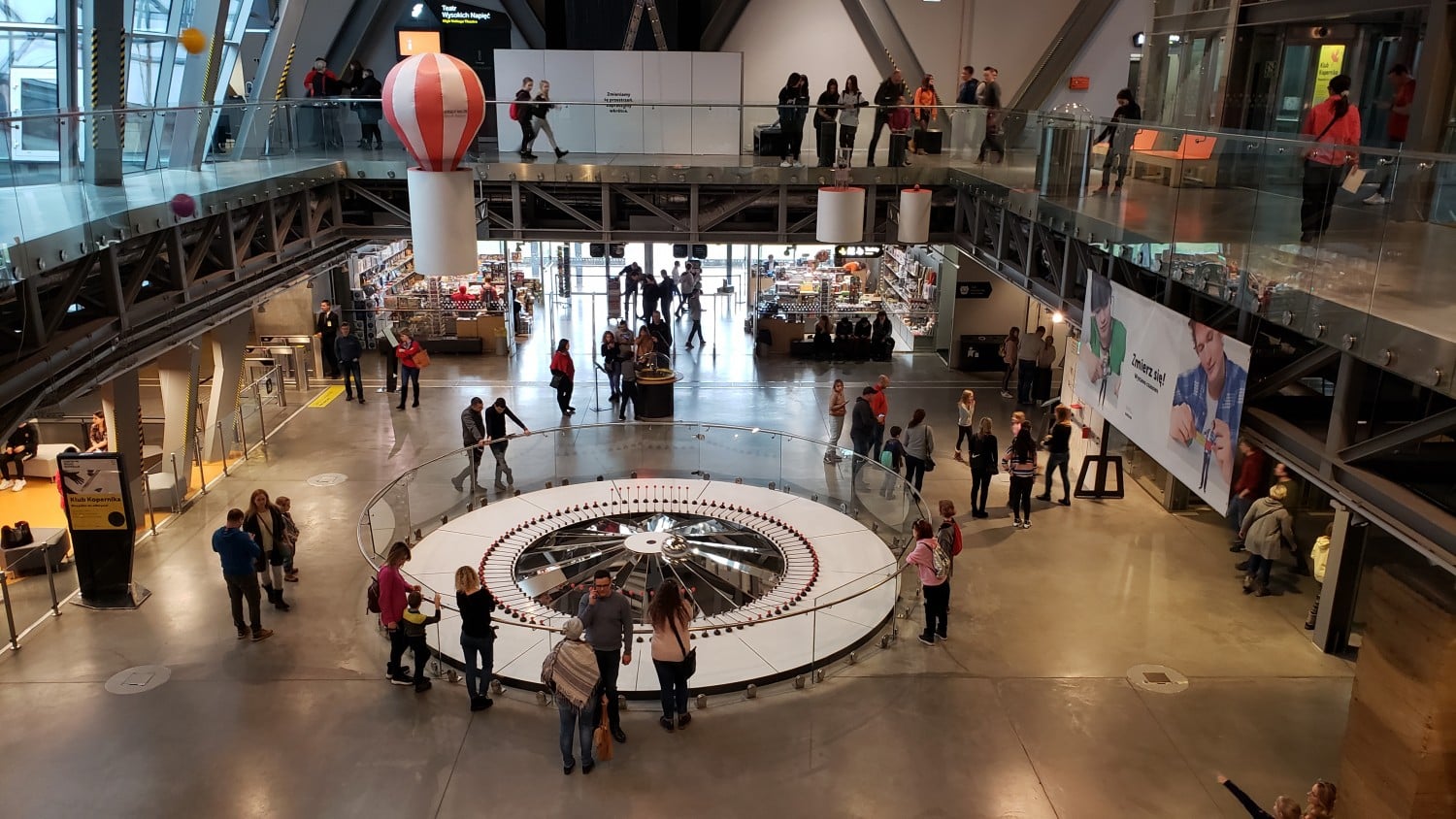
A Visit to the Copernicus Science Center, Warsaw
One of the last things I did before wrapping up my semester in Warsaw, Poland was pay a visit to the Copernicus Science Center. In this article I will share some background on the center, talk about my visit and what I learned, and finally share some photos from this sweet place! Background The science […]